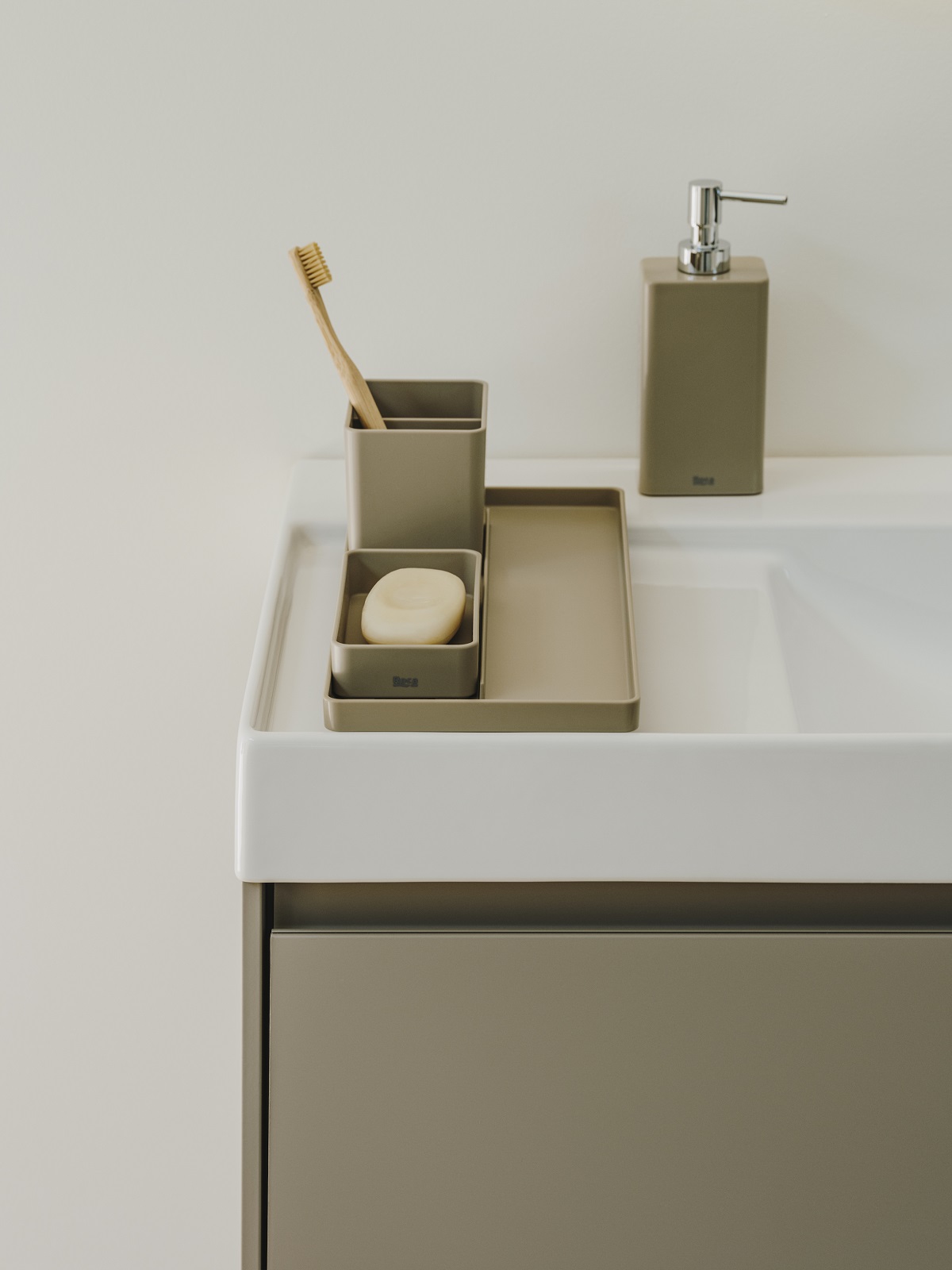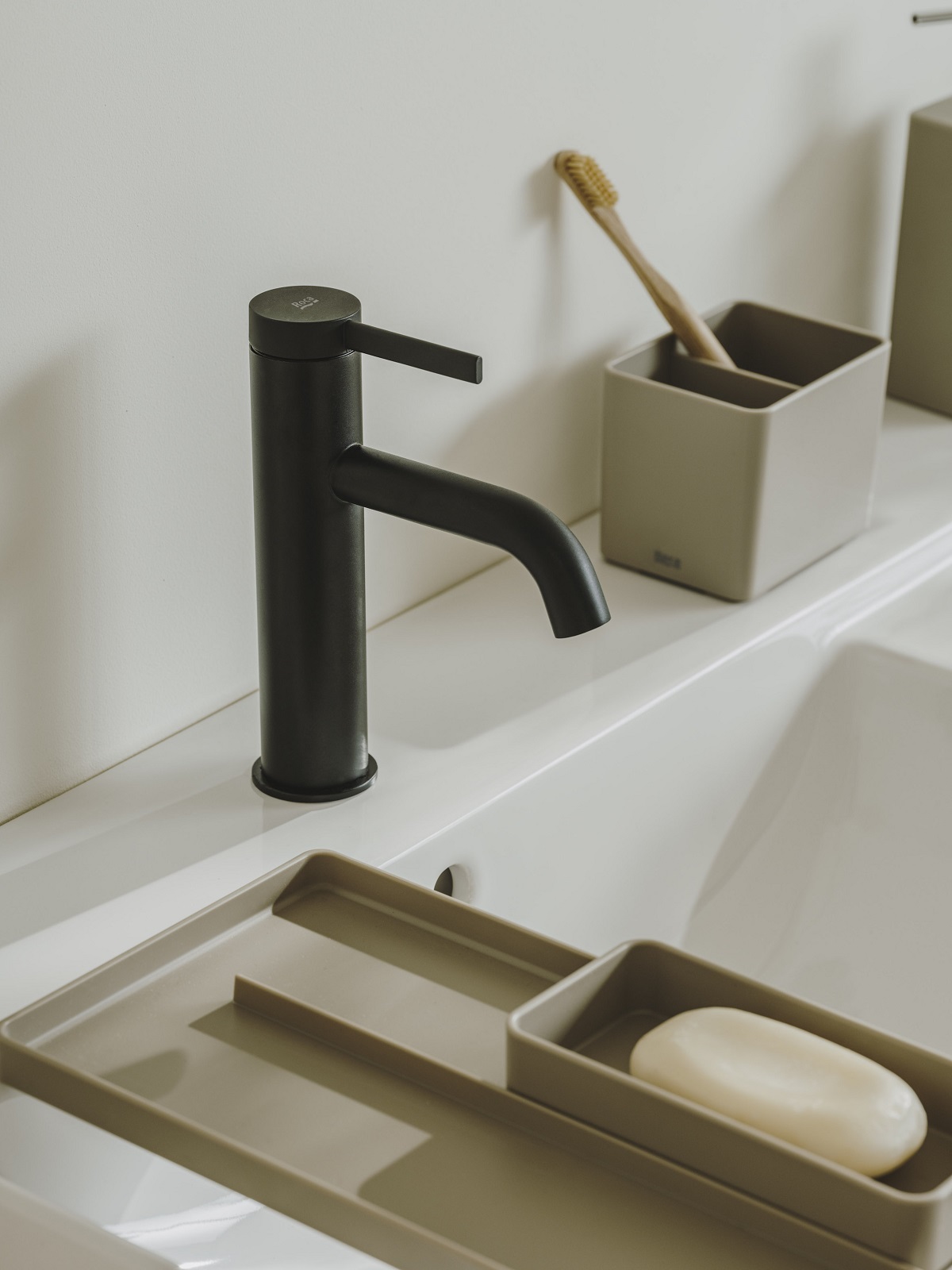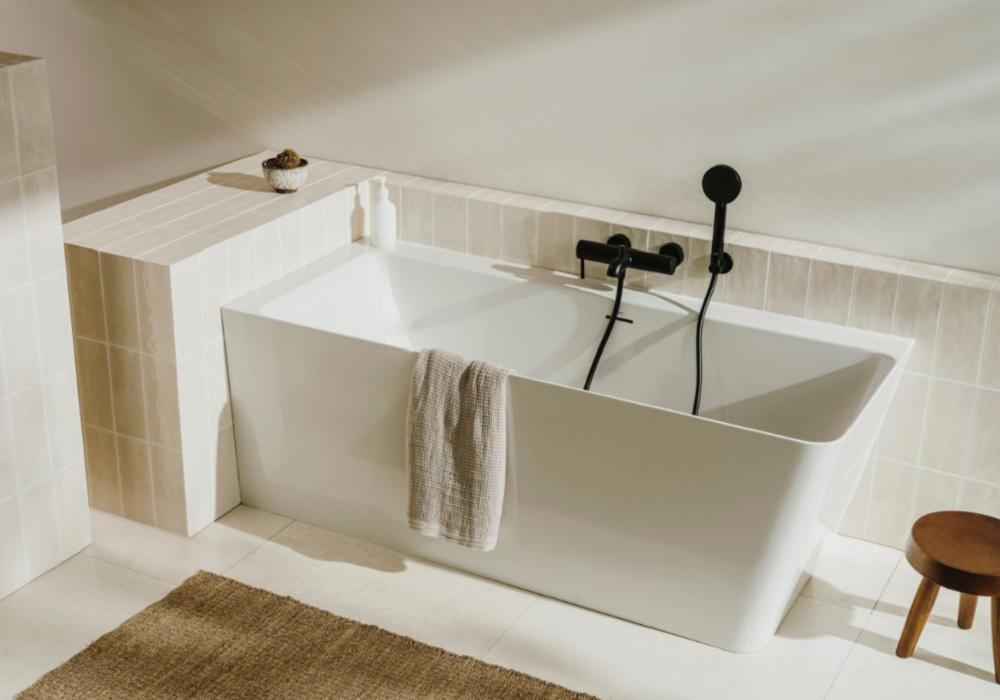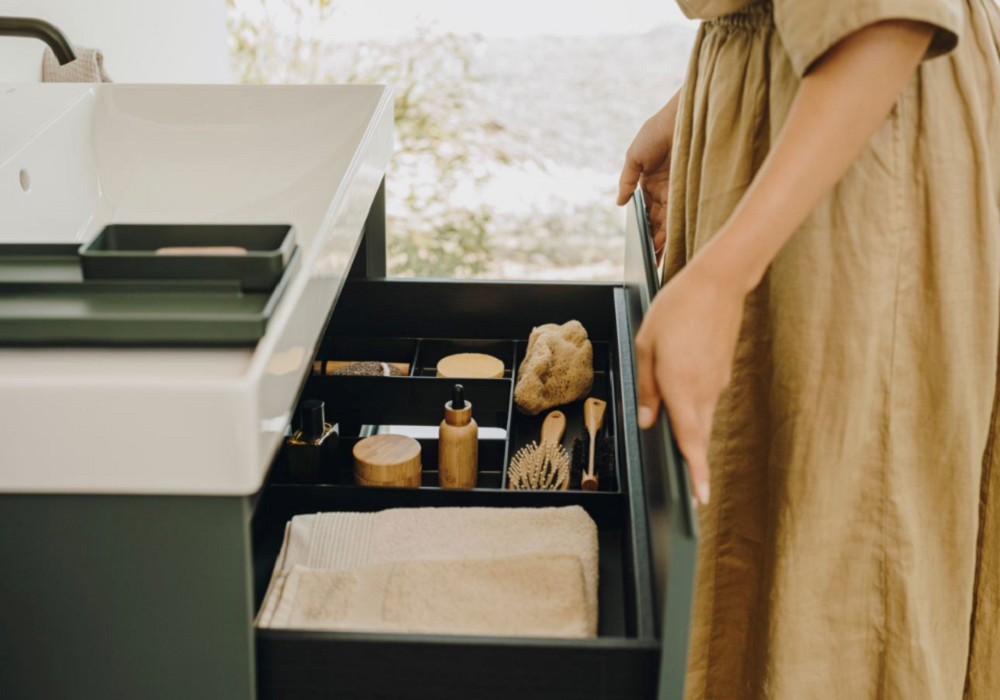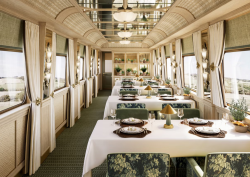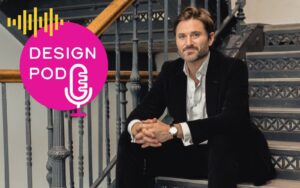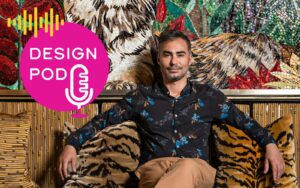While experiencing the Everything Flows exhibition at the Roca London Gallery, a display showcasing the decade-short collaboration between the showroom and Zaha Hadid Design, Editor Hamish Kilburn caught up with Jon Bond, Head of Projects (UK) at Roca and Laufen to capture the evolution of wellness through his eyes…
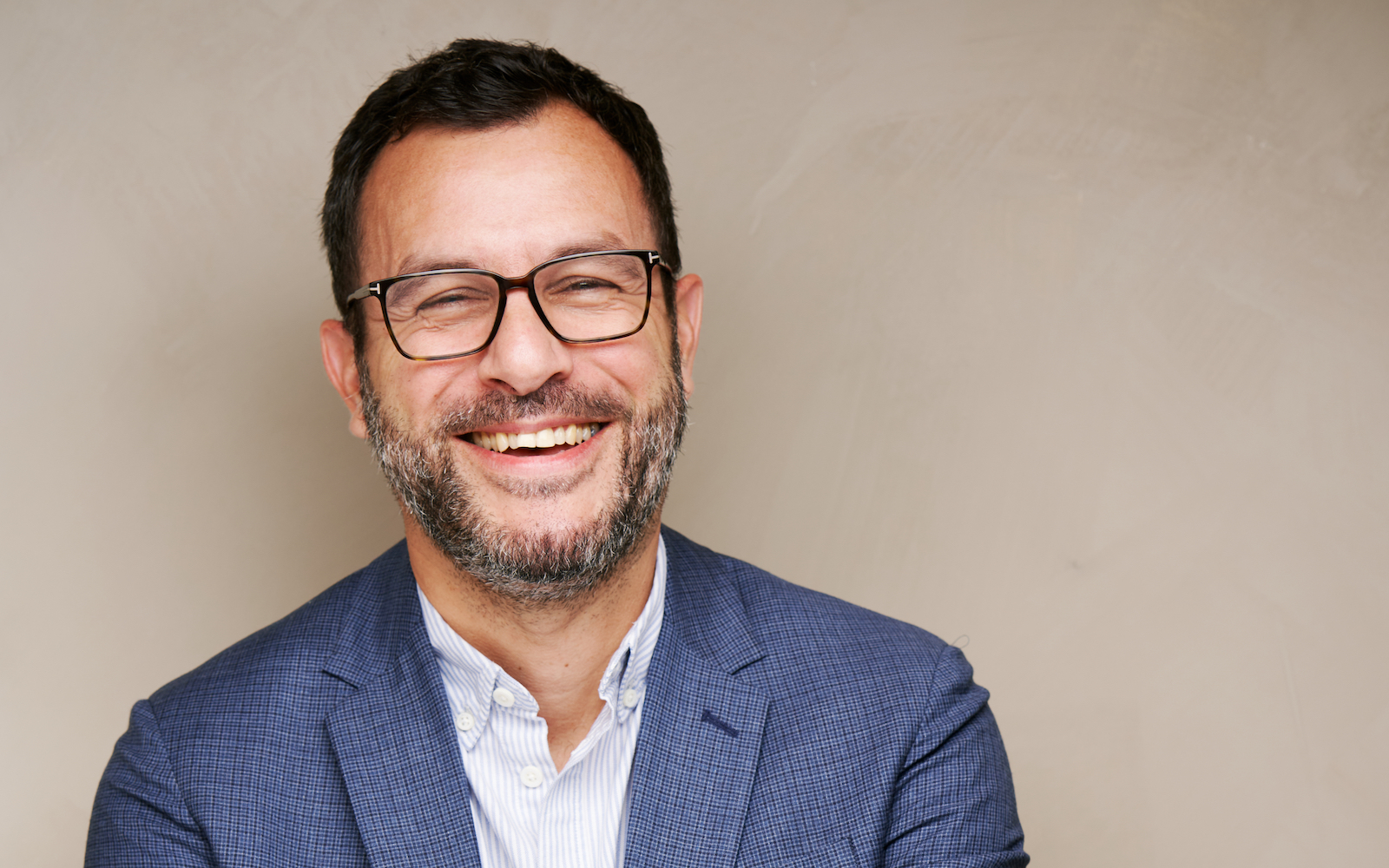
In 2011, Roca and Laufen made a statement when the two brands, owned by the same company, unveiled their London HQ, which was so far removed from any other showroom of its time – arguably that is still the case today. Partnering with Zaha Hadid Architects and Zaha Hadid Design, the brands’ new home was one that put experience at the forefront of showroom design. “It wasn’t an accident that when you walk into the gallery, you don’t actually see any products,” Jon Bond, Head of Projects at Roca and Laufen, tells me as we arrive through the automatic doors into what feels like a different world. “It was progressive, and simply a different way to look at what a showroom should be.”
Highlighting the rewards of doing things differently, more than a decade on since the opening, Roca and Laufen are sheltered in what is still one of London’s most innovative showrooms, which has is utilised for events and parties throughout the year.
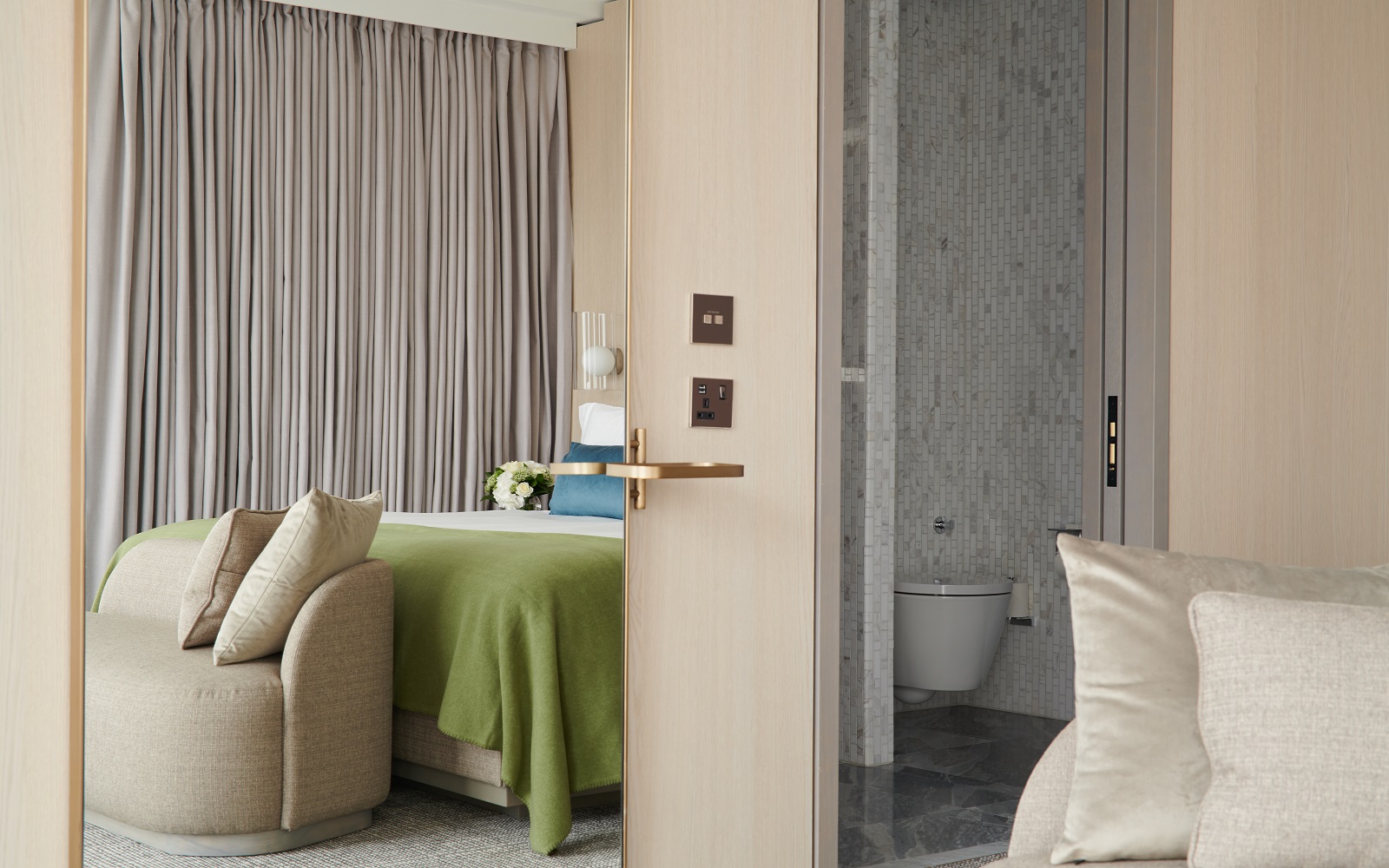
Image credit: Jack Hardy / Laufen / Pan Pacific London
From Spring earlier this year until the end of 2022, it is sheltering an exhibition that showcases key objects developed by Zaha Hadid Design from the last 15 years. Despite, to my surprise, having not worked together on a designing and developing a bathroom product, there is unquestionable synergy between the energy of both the studio and the Roca and Laufen brands. And this is where I feel I should begin when catching up with Bond on his turf.
Hamish Kilburn: Why is the ZHD collaboration not only important but also relevant?
Jon Bond: Roca London Gallery remains incredibly important to Roca in the UK, in so far as it communicates our brand values of innovation and design excellence through partnership with one of the world’s leading design practices. As one of six global Roca hubs (also including Barcelona, Madrid, Lisbon, Shanghai and Beijing), it acts partly as a showroom space, but equally important is its role in engaging with the design community through a continually evolving programme of exhibitions and events. The current exhibition celebrating 10 years of our partnership with ZHD is genuinely my favourite collaboration to date. In demonstrating the continued excellence of ZHD across a wide range of disciplines, it’s driven footfall to the space and allowed us the perfect opportunity to re-engage with our friends in the design community after so long away.

Image credit: Luke O’Donavan / London Roca Gallery
HK: Let’s talk about Roca’s latest unveil, Ona Collection. It’s a beauty. What makes it so unique to anything the brand has launched in the past?
JB: It’s brilliant, isn’t it? I think for Roca this is a moment, and the collection really answers the need from designers for design-forward products that come in so many different variations.
When the range was launched the designers (Noa Design and Benedito Design) talk about Ona (which means ‘wave’ in Catalan) as facilitating the ‘democratisation of design’. It stands out for its versatility in terms of the full bathroom solution, whilst making full use of Roca’s recent innovations in fine ceramic, stonex, Everlux pvd coatings and touchless technology.
The basins are a great example to demonstrate that point. The range includes different configurations where the bowl is placed asymmetrically or centred, with a full range of sizes in the wall-hung version from space-saving cloakroom options to large double-basins, and with two different projections. It’s also the first Roca range where every ceramic piece is available in gloss or matt white finishes.
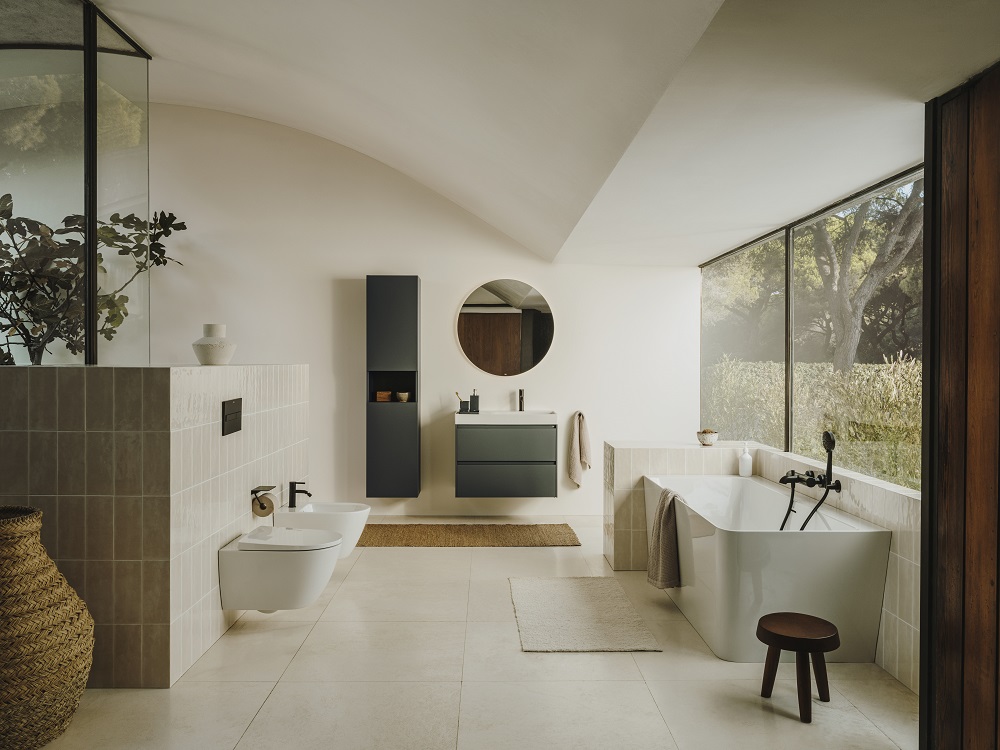
Image credit: Roca
Moreover, Fineceramic® facilitates a more sustainable production process: it generates zero waste, all its composites are natural and the weight reduction positively impacts firing and transport, reducing c02 emissions
HK: What would you say are the biggest demands among designers when it comes to product development at the moment?
JB: I would say that the biggest challenges regarding the design of products for the bathroom space lie in the contradiction between what is demanded from the modern bathroom (especially in terms of luxury hospitality) and the physical space within which it is realised.
The bathroom is, first and foremost, a place of sanctuary, not only because its often the only room in our living space with a lock on it, but also because it’s where we perform our daily rituals at the beginning and end of each day. The trend for wellness has amplified this sense of the bathroom as an ‘escape’ from the world around us, as has the pandemic but in a different way.
As hospitality increasingly looks toward the re-purposing of existing buildings within the urban landscape where space is at a premium, the contradiction between luxury/sanctuary and the physical dimensions of the typical bathroom become even more stark.
So the way in which you design that space and design the products within it – to make them fit a small footprint yet make them aesthetically pleasing, functional and enjoyable to use – is a real challenge.
HK: How are Roca and Laufen embracing the mega trend that is wellness through product innovation?
JB: Wellness has a broader meaning than within a spa or hospitality context to most people. Its about providing sanctuary and escape through the use of products which fit the way we live and use our bathroom spaces.
This could be through using natural materials or materials which mimic natural finishes, to create a sense of escapism from the look and feel of the rest of the design (in the case of hospitality). Or it could be through the application of design solutions which maximise space and create ‘luxury’ in that way. Fine ceramic or ‘Saphir Keramik’ as pioneered by Laufen, has changed the way we think about ceramic design, creating beautiful forms but also positively impacting functionality in space-restricted areas.
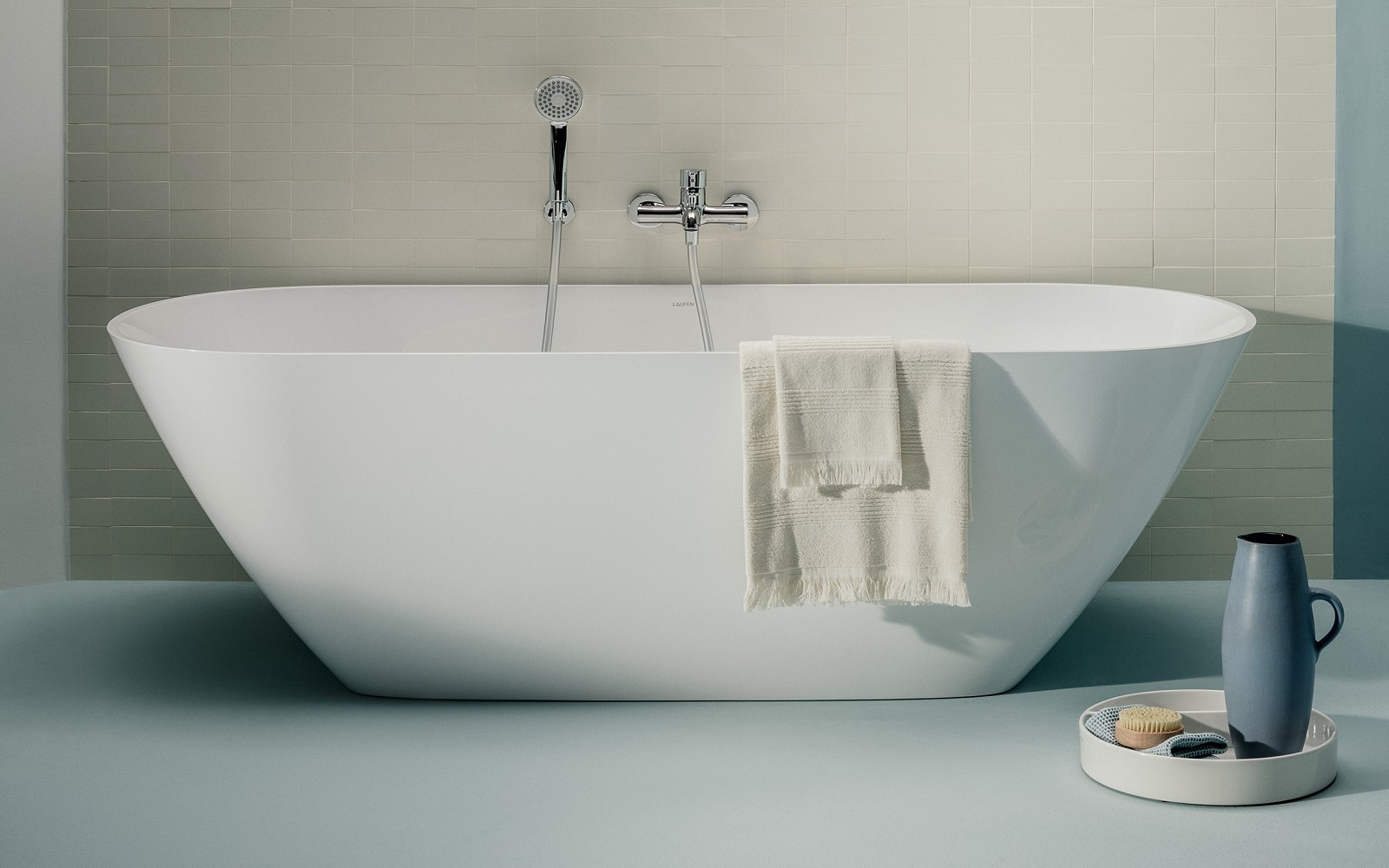
Image credit: Laufen
HK: From your experience, having worked with designers and architects for many years, what are the biggest pitfalls hotels fall down when designing the bathroom?
JB: Aside from my personal gripe of walking into a hotel room and spending 10 minutes trying to figure out how to turn on the bathroom lights, I wouldn’t say the pitfalls are the fault of the specifier necessarily. The trend for coloured brassware shows no sign of abating for example, but true matt finishes are only possible by powder coating which isn’t suitable for high traffic areas such as public bathrooms, and arguably hotels full-stop. Design should be a collaboration between all the stakeholders involved, both in terms of the concept and physical design, but also requires the expertise of the manufacturer in recommending the most suitable products and materials.
QUICK-FIRE ROUND
Q: How long have you worked for Roca?
A: Eight years.
Q: What’s been your favourite collection so far?
A: For Roca, it is Ona Collection. For Laufen, Kartell.
Q: What has been the biggest, most significant innovation in bathroom tech in the last 10 years?
A: Saphir Keramik’ changed the way ceramics were in the bathroom.
Q: What’s been your most challenging project to date?
A: Every project, without fail, has its unique challenges.
Q: What did you want to be when you were growing up?
A: I wanted to be a sports journalist.
HK: At HIX 2021, the brand displayed its new range of smart products. What are your plans this year?
JB: To give Ona a platform. It’s a fabulous range which completely reinvigorates our ‘full-bathroom’ offer for projects. We can’t wait for the design community to see and feel the products in person and we’re really looking forward to seeing everyone there.
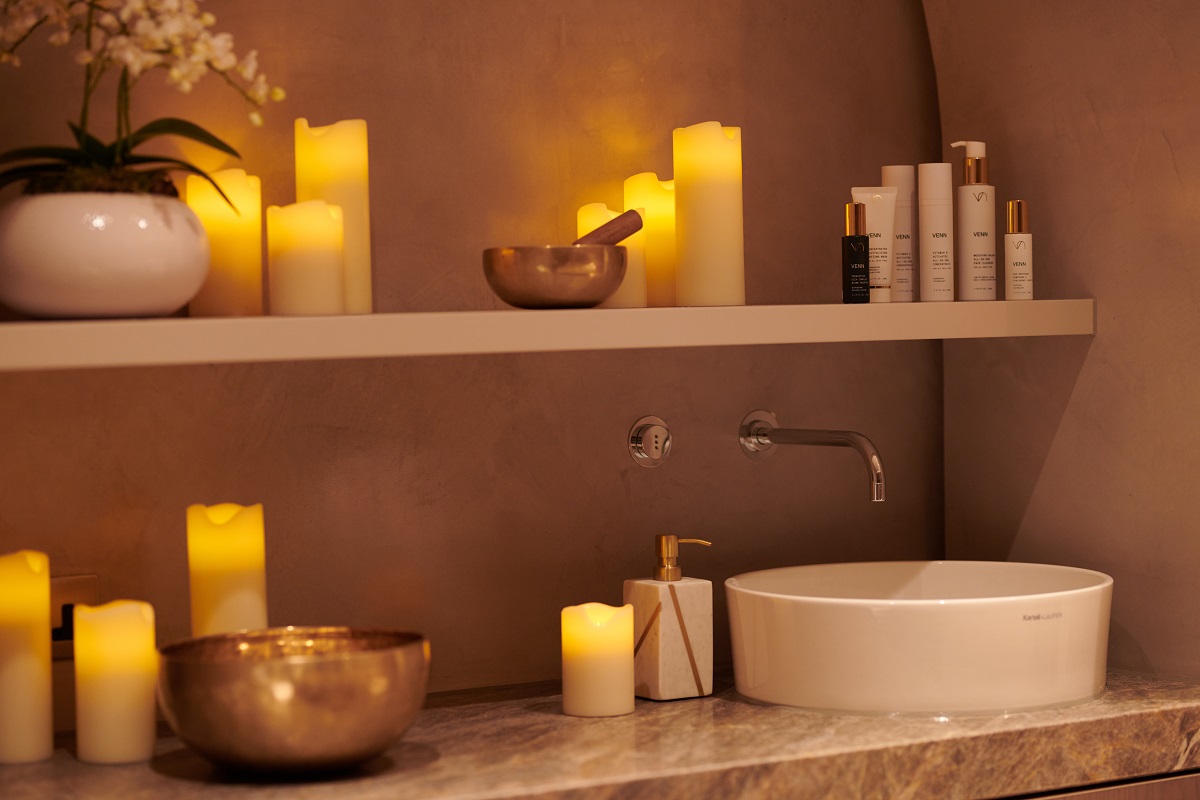
Image credit: Jack Hardy
HK: What will hotel showering experience look like 30 years from now?
JB: Good question. Again, there’s a real friction here between the need to deliver a luxury (or even pleasurable) bathroom experience and our need to conserve our natural resources. One of the non-negotiables in many mid to upper-scale hotels is the rainfall shower, which is not conducive to saving water. A product was released into the market recently which uses only five to six litres of water to deliver a flow rate of 20l per min (check that) for a 10-minute shower, by utilising a closed-loop system that constantly cleans the water as it circulates. In doing so it saves around 80 per cent of the energy of a standard shower in addition to the huge water savings it offers.
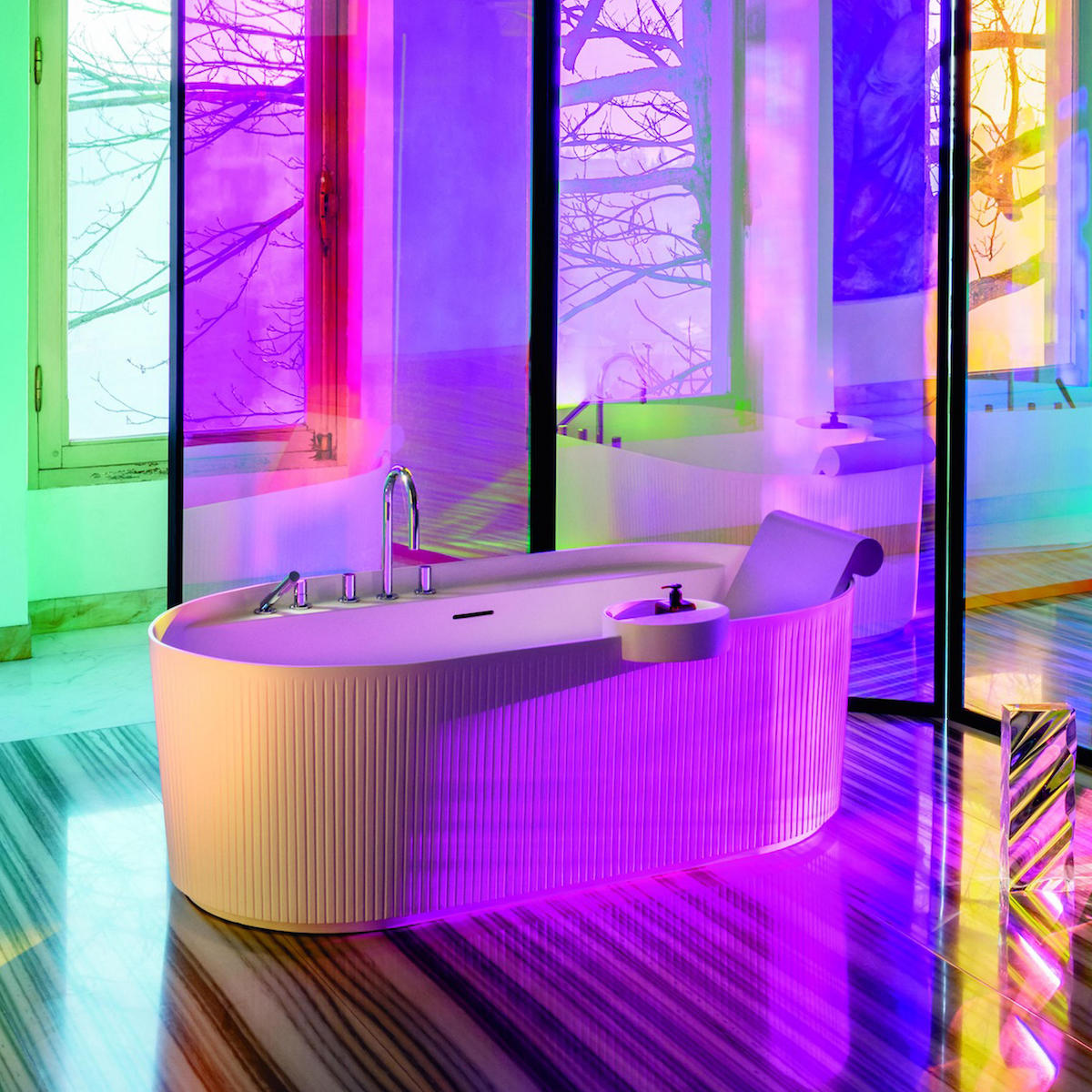
Image credit: Laufen
If grey water recycling can be adapted to retro-fit projects without affecting the user experience, then there may be no need for the hotel showering experience to change at all. Otherwise, water monitoring will be commonplace I’m sure, with hotels incentivising guests to use less water through money off their next stay or vouchers to use in the restaurant or bar. And as manufacturers, we need to ensure we’re designing products which meet these requirements and deliver products which both conserve water and are sustainably manufactured.
Roca and Laufen is one of our Recommended Suppliers and regularly features in our Supplier News section of the website. If you are interested in becoming one of our Recommended Suppliers, please email Katy Phillips.
Main image credit: Roca/Laufen





